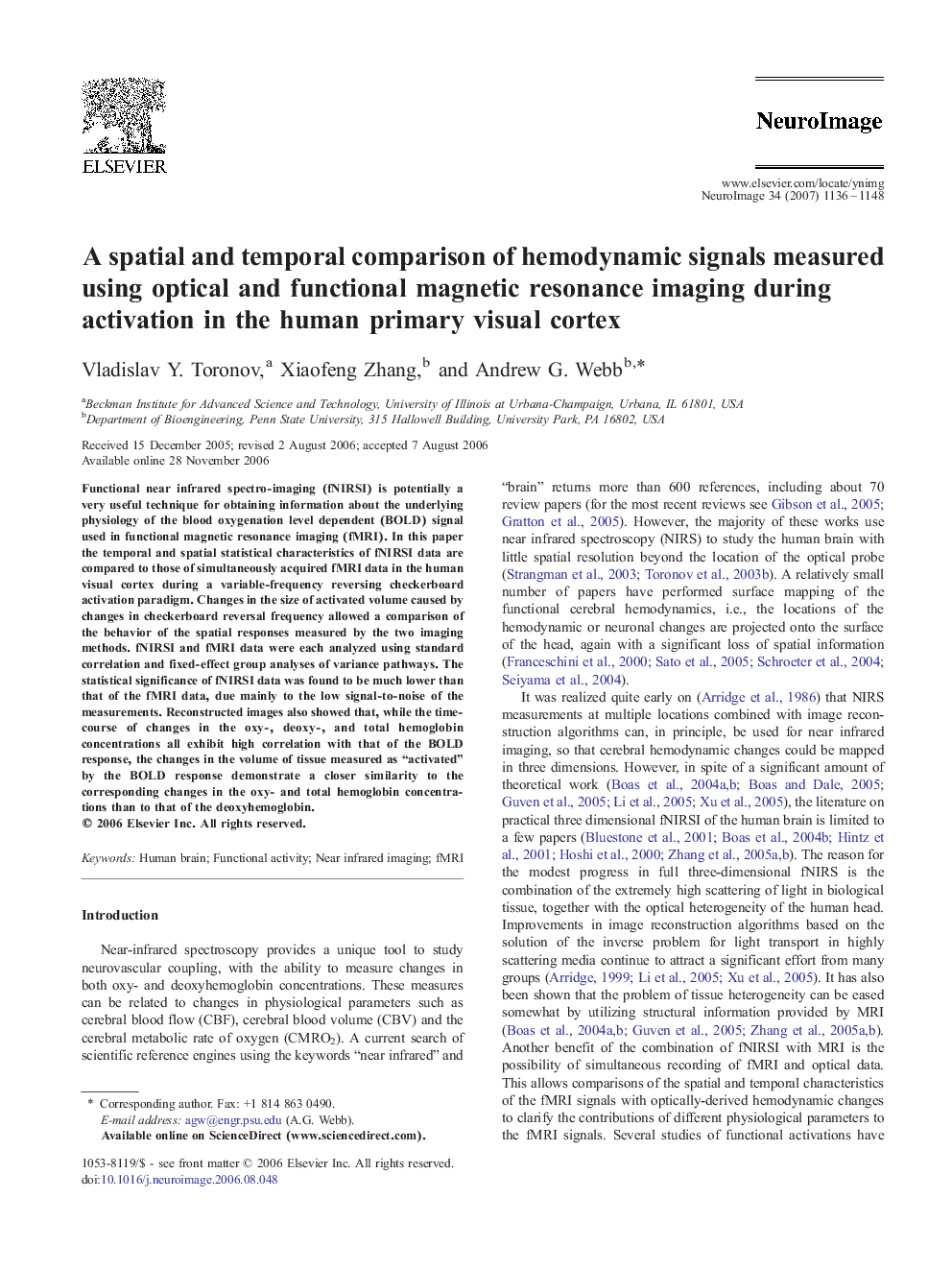| Article ID | Journal | Published Year | Pages | File Type |
|---|---|---|---|---|
| 6040807 | NeuroImage | 2007 | 13 Pages |
Abstract
Functional near infrared spectro-imaging (fNIRSI) is potentially a very useful technique for obtaining information about the underlying physiology of the blood oxygenation level dependent (BOLD) signal used in functional magnetic resonance imaging (fMRI). In this paper the temporal and spatial statistical characteristics of fNIRSI data are compared to those of simultaneously acquired fMRI data in the human visual cortex during a variable-frequency reversing checkerboard activation paradigm. Changes in the size of activated volume caused by changes in checkerboard reversal frequency allowed a comparison of the behavior of the spatial responses measured by the two imaging methods. fNIRSI and fMRI data were each analyzed using standard correlation and fixed-effect group analyses of variance pathways. The statistical significance of fNIRSI data was found to be much lower than that of the fMRI data, due mainly to the low signal-to-noise of the measurements. Reconstructed images also showed that, while the time-course of changes in the oxy-, deoxy-, and total hemoglobin concentrations all exhibit high correlation with that of the BOLD response, the changes in the volume of tissue measured as “activated” by the BOLD response demonstrate a closer similarity to the corresponding changes in the oxy- and total hemoglobin concentrations than to that of the deoxyhemoglobin.
Related Topics
Life Sciences
Neuroscience
Cognitive Neuroscience
Authors
Vladislav Y. Toronov, Xiaofeng Zhang, Andrew G. Webb,
